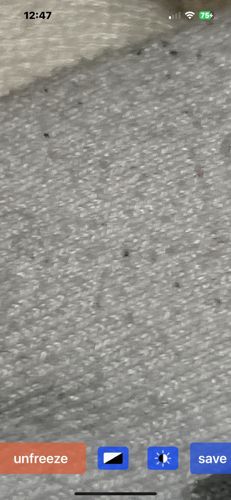Flea (likely Cat flea or Dog flea)
Scientific Name: Ctenocephalides felis (most common) or Ctenocephalides canis
Order & Family: Order: Siphonaptera, Family: Pulicidae
Size: 1.5 - 3.3 mm (0.06 - 0.13 inches) long

Natural Habitat
Fleas typically live on the bodies of their warm-blooded hosts (mammals and birds) but also inhabit pet bedding, carpets, upholstery, and cracks in floors, especially in areas where pets rest. They thrive in warm, humid environments.
Diet & Feeding
Adult fleas feed exclusively on the blood of their hosts. They are ectoparasites, meaning they live on the outside of the host's body and feed by piercing the skin and sucking blood. Larvae feed on organic debris, including adult flea feces (which contain digested blood).
Behavior Patterns
Fleas are wingless insects known for their ability to jump impressive distances relative to their size, aided by powerful hind legs. They are highly agile and can quickly move through fur or hair. Their life cycle consists of four stages: egg, larva, pupa, and adult. Eggs are laid on the host but often fall off into the environment. Larvae hatch and develop in cracks and crevices, feeding on organic matter. Pupae form cocoons and can remain dormant for extended periods until a host is detected. Adults emerge, seek a host, and begin feeding and reproducing. They are often most active after periods of host absence, sensing vibrations, CO2, and heat.
Risks & Benefits
Risks: Fleas are significant pests for humans and animals. Their bites cause itchy red welts, leading to discomfort, skin irritation, and allergic reactions (flea allergy dermatitis) in sensitive individuals and pets. They can also transmit diseases, including Bartonellosis ("cat scratch disease"), murine typhus, and serve as intermediate hosts for tapeworms (e.g., Dipylidium caninum). Benefits: From a human perspective, fleas offer no direct benefits. In ecological terms, they are part of the food chain for some predators and scavengers, but their parasitic nature generally outweighs any perceived benefits.
Identified on: 9/17/2025